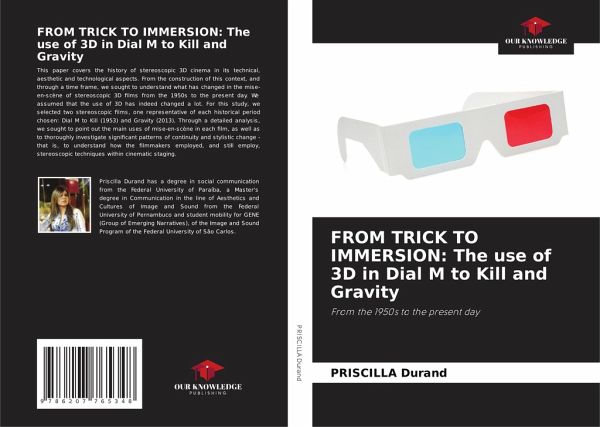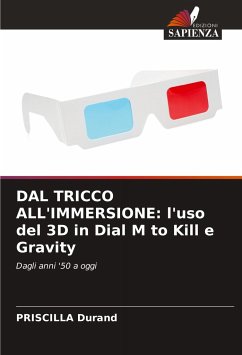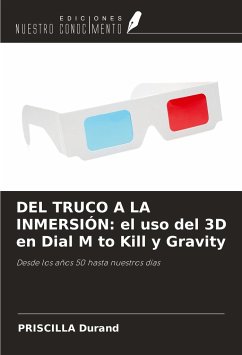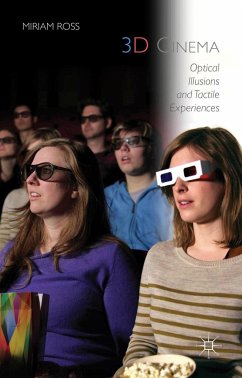
FROM TRICK TO IMMERSION: The use of 3D in Dial M to Kill and Gravity
From the 1950s to the present day
Versandkostenfrei!
Versandfertig in 6-10 Tagen
51,99 €
inkl. MwSt.

PAYBACK Punkte
26 °P sammeln!
This paper covers the history of stereoscopic 3D cinema in its technical, aesthetic and technological aspects. From the construction of this context, and through a time frame, we sought to understand what has changed in the mise-en-scène of stereoscopic 3D films from the 1950s to the present day. We assumed that the use of 3D has indeed changed a lot. For this study, we selected two stereoscopic films, one representative of each historical period chosen: Dial M to Kill (1953) and Gravity (2013). Through a detailed analysis, we sought to point out the main uses of mise-en-scène in each film, ...
This paper covers the history of stereoscopic 3D cinema in its technical, aesthetic and technological aspects. From the construction of this context, and through a time frame, we sought to understand what has changed in the mise-en-scène of stereoscopic 3D films from the 1950s to the present day. We assumed that the use of 3D has indeed changed a lot. For this study, we selected two stereoscopic films, one representative of each historical period chosen: Dial M to Kill (1953) and Gravity (2013). Through a detailed analysis, we sought to point out the main uses of mise-en-scène in each film, as well as to thoroughly investigate significant patterns of continuity and stylistic change - that is, to understand how the filmmakers employed, and still employ, stereoscopic techniques within cinematic staging.














